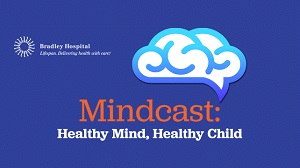ADHD: Facts About Attention Deficit Hyperactivity Disorder in Boys and Girls

ADHD and its symptoms
Attention deficit hyperactivity disorder (ADHD) is one of the most common medical conditions in childhood.
The symptoms of ADHD are usually first observed in early childhood, around ages three to four, and often continue into adulthood. The symptoms of ADHD get in the way of a child’s ability to succeed in the home, school, and social settings. They include:
- Distractibility – trouble focusing
- Hyperactivity – too much energy or level of activity
- Impulsivity – difficulty with stopping to think before acting
Just because a child has trouble focusing or controlling their emotions does not mean they have ADHD. Young children experience struggles with staying seated, remembering information, and waiting their turn. This is expected and normal for young children.
With ADHD, the difference is that children continue to experience these struggles at an older age. Kids with ADHD develop skills and knowledge like other kids, but they may do so at a slower pace than their peers. A tool known as an ADHD evaluation will determine whether the child’s behaviors are normal for their age or possibly reflect ADHD.
Mindcast: Healthy Mind, Healthy Child PodcastA Podcast from the experts at Bradley Hospital, Leaders in mental health care for children |

|
ADHD in boys and girls
There are some differences in ADHD in boys and girls.
- Boys are twice as likely as girls to be diagnosed with ADHD – around 12 percent of boys and six percent of girls. In children without ADHD boys are also more likely to experience hyperactivity and impulsivity than girls.
- Boys with ADHD are more likely to have worse symptoms than girls with ADHD.
- Boys often start to display their symptoms in early childhood, while the symptoms in girls often do not emerge until later childhood.
Clinicians, unfortunately, may also have some "blind spots" in our approaches to diagnosing ADHD. There is some evidence that when a child has milder symptoms, boys are more likely to be diagnosed with ADHD than girls. It’s important to be mindful of these potential biases.
Cause of ADHD
We have known about ADHD for over 100 years. Symptoms in children were first described in the 1700s and 1800s. The earliest, modern description of ADHD was written by pediatrician Sir George Frederic Still in 1902. We have used the term ADHD (previously called “ADD”) since 1987.
Research has shown that ADHD is a disorder of the brain. It is not because the child is doing something on purpose or being a “bad kid.” It is primarily caused by dysfunctional activity in the “control centers” of the brain (called the “frontostriatal pathways”). These control centers are often immature in children with ADHD, which leads to their difficulties controlling their thoughts, feelings, and/or actions.
The most common reason a child develops ADHD is through familial or genetic inheritance. If a parent has ADHD, the child is very likely to also develop ADHD. It is the same as eye color, height, and other traits, which are genetically passed down from parent to child.
Disruptions to brain development can also cause ADHD, such as premature birth, prenatal drug and alcohol exposure, epilepsy, traumatic brain injuries, early lead exposure, and genetic disorders.
Treating ADHD
ADHD is best treated with a combination of medication and psychological interventions. Medications known as psychostimulants are a primary treatment of ADHD. About 70 to 80 percent of children with ADHD will experience an improvement in their symptoms from a medication. This is a very high success rate; in fact, it is higher than many common medical disorders and treatments. Unfortunately, inaccurate information on the internet regarding ADHD medication can confuse or mislead families who are new to ADHD. The fact is that medication is safe and effective for children with ADHD.
Psychological interventions are also highly effective at treating ADHD symptoms and the symptoms that often co-occur with ADHD. This includes parent training, behavioral modification, academic tutoring, and social skills. Psychotherapy can also be highly effective in improving the symptoms that can often co-occur with ADHD, such as anxiety and depression.
ADHD treatment at Bradley Hospital
Our goal at Bradley Hospital is to develop new, brain-based treatments for ADHD. We are conducting a clinical trial to test whether magnetic brain stimulation can enhance dysfunctional brain activity underlying ADHD and improve clinical symptoms in teens ages 13-18 with ADHD. We “hypothesize” or think that participating will lead to improved ADHD-related symptoms. We are still enrolling and encourage families affected by ADHD to contact us. This study is generously funded by the Carol Peterson Foundation. If parents of teenagers with ADHD are interested in joining this clinical trial or learning more, please reach out to me at 401-432-1359 or Bkavanaugh@lifespan.org.
If you think your child is experiencing signs of ADHD, talk to your pediatrician or contact the Children's Neurodevelopment Center (CNDC) at 401-444-5685.

About the Author:
Brian Coyne Kavanaugh, PsyD
Brian Kavanaugh, PsyD, is a clinical neuropsychologist at Bradley Hospital with a specialization in pediatric neuropsychology and expertise in the neurocognitive aspects of childhood psychiatric disorders.
Find a Doctor

The right provider is in our network
Search more than 1,200 providers in our network.



